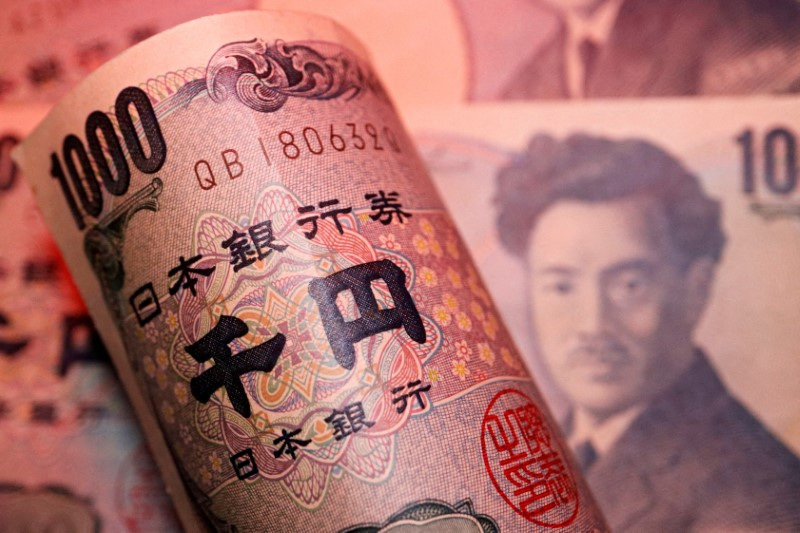By Laura Matthews and Harry Robertson
NEW YORK/LONDON (Reuters) -The yen remained weak for a second straight day on Tuesday and the dollar softened against the rest of its peers in calmer trading, as markets await U.S. inflation data that could point to the outlook for interest rate cuts by the Federal Reserve. .
The dollar began to soften after the release of data showing that U.S. producer prices rose less than expected in July as the rise in the cost of goods was tempered by cheaper services, indicating that inflation continued to moderate.
“We’re seeing a little bit of weakness, and part of the problem is we don’t have a CPI (report) yet,” said Erik Nelson, macro strategist at Wells Fargo Securities in London. “We’ve seen a little bit of dollar weakness. The core PPI number has actually been quite strong, which may also be holding back dollar weakness.”
Currency markets have been rocked by a sharp rally in the yen since July, which has led to – and been driven by – the unwinding of a very popular investment strategy, the so-called carry trade, and contributed to a decline in stock prices.
Still, the dollar was softer against the yen on Tuesday to 146.98, a sign that markets appear to be over the worst of the recent turbulence.
The yen fell to a 38-year low in July as investors jumped into the carry trade, in which they borrow yen in Japan, where interest rates are low, and then sell it for other currencies to buy higher-yielding assets elsewhere.
A number of factors, most notably a surprise rate hike by the Bank of Japan and expectations of US rate cuts due to a slowing labor market, have combined to reverse the carry trade rush, sending the yen up about 8% since mid-July .
Government sources told Reuters that Japan’s parliament plans to hold a special session on August 23 to discuss the central bank’s decision last month to raise interest rates.
Investors are awaiting the more closely watched consumer price index report on Wednesday, which will also guide the Fed’s interest rate policy.
The rate fell to 102.92, while the euro rose 0.22% to $1.0957.
“Taken together, this is a reasonable indication that the Fed will have no obstacles to cutting rates by at least 25 basis points (bp) in September,” said Helen Given, associate director of trading at Monex USA.
“I still don’t believe a 50 basis point rate cut is likely as the Fed has been reluctant to shock the market, but the potential for a easing rather than a continuation of rates promises some USD weakness, especially as other central banks around the world are considering keeping rates stable during the next meeting cycle.”
THE POUND IS GOING UP
Sterling rose 0.42% to $1.2817, with data earlier in the session showing Britain’s unemployment rate fell to 4.2% in June from 4.4% in May, raising economists’ expectations of a slight increase. The number of vacancies fell, while wage growth slowed.

Low response rates to surveys have recently led investors and economists to give less weight to UK labor market data.
In other currencies, the dollar rose 0.35% to $0.6608. The dollar was flat against the Swiss franc, another currency that has appreciated recently as investors unwound carry trades.


